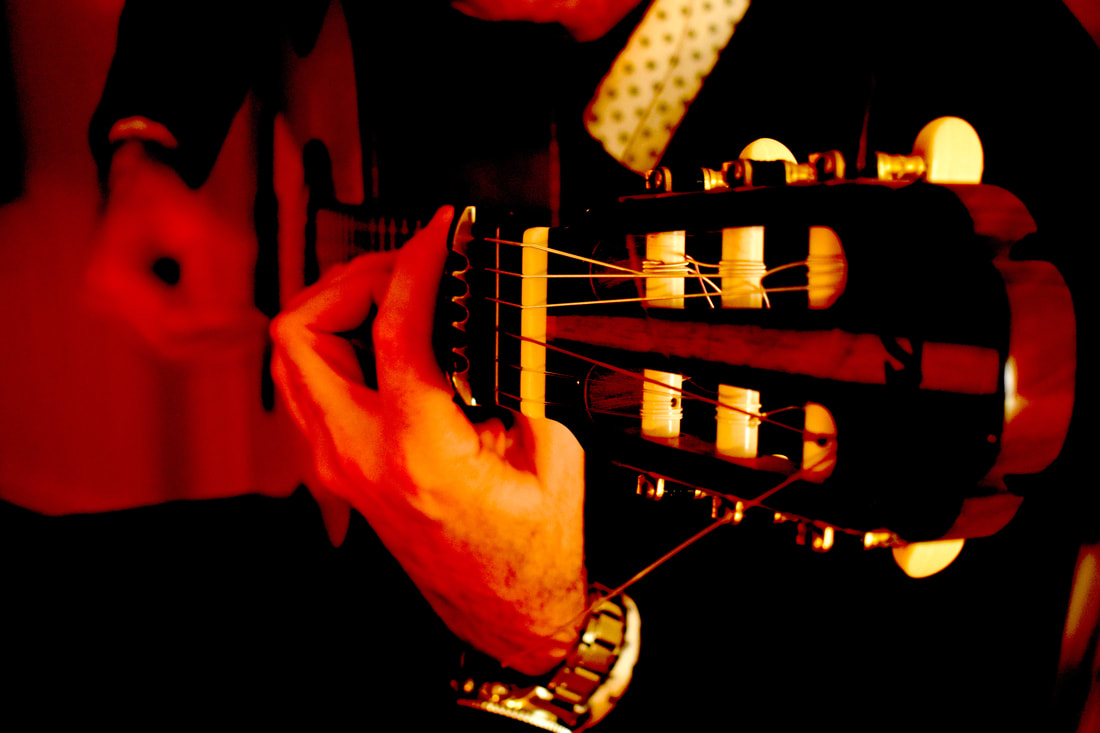While flamenco encompasses a wide range of musical styles and techniques, one of the essential aspects that gives it its unique character is the use of Spanish and Arabic-sounding scales. Below we take a look at how these scales form the foundation of flamenco melodies.
Rumba Scale in Flamenco
One of the most accessible flamenco styles for beginners is Rumba, often played using the E Phrygian mode. Below is the tablature to help you practice:
e|-----------------0-1-| B|-------------0-1-----| G|-------0-2-----------| D|-----2---------------| A|-2-3-----------------| E|---------------------|
Another version of this scale:
e|--------------------------0-1-| B|---------------------0-1------| G|----------------0-2-----------| D|----------0-2-----------------| A|----0-2-3---------------------| E|0-1-3-------------------------|
Try practicing this scale with a capo on the 5th fret to get a feel for typical flamenco phrasing. Rafael’s approach focuses on learning by ear, as flamenco is traditionally passed down – no tabs!
So really we recommend you try not to use the tabs above and instead try to listen to the video and repeat it. While harder at first, you'll be amazed how much better you become at the guitar quickly.
Flamenco Guitar Scales: The Phrygian Mode
The Phrygian mode forms the backbone of many traditional flamenco palos, including Soleá and Bulería. It is characterized by a minor tonality and a distinctive flattened second note, creating a dramatic and melancholic sound. This scale works particularly well in expressive solos where emotion is key.
Major Phrygian Mode (Andalusian Scale)
The Major Phrygian mode, also called the Andalusian scale, introduces a major third interval, adding brightness to styles like Alegrías. This contrast between dark and bright sounds defines many flamenco performances.
Explore more on Alegrías and how rhythmic patterns such as compás guide flamenco phrasing in my article on Alegrías in Flamenco Guitar.
Application of Right-Hand Techniques
Techniques such as rasgueados (rapid strumming), picado (fast picking), and golpe (tapping) are essential to flamenco. These techniques allow guitarists to express emotion through subtle rhythmic accents and variations.
In the video above, see how these techniques come together in a Soleá piece. Mastery of right-hand techniques is essential for building fluidity and dynamic expression when applying scales.
Practice Tips for Mastering Flamenco Scales
- Start Slow: Use a metronome to build speed gradually. This is crucial when practicing fast scales like E Phrygian.
- Integrate Compás: Play along with flamenco rhythms like bulería to develop a strong sense of timing.
- Experiment with Expression: Vary your dynamics by practicing soft and loud passages to explore the emotional range of each scale.
For a more in-depth breakdown of rhythms, visit our article onflamenco rhythms & compas.
By combining scales, right-hand techniques, and rhythmic patterns, you’ll develop a well-rounded flamenco sound. To deepen your skills further, explore Rafael’s online course for step-by-step lessons and personalized guidance.
Learn from a Master Who's Performed for Royalty: Start Your Flamenco Journey Today
- Unlock this article & video library for free
- Join thousands of guitarists who finally got past only 'knowing some basic chords'
- Learn flamenco from a lifelong performer & celebrity teacher from Madrid
- Rafael has taught EOB (Radiohead), Jack Peñate & played for HRH Elizabeth II (etc)
By entering your email you agree to receive email updates from Flamenco With Rafael. See our Privacy Policy.




